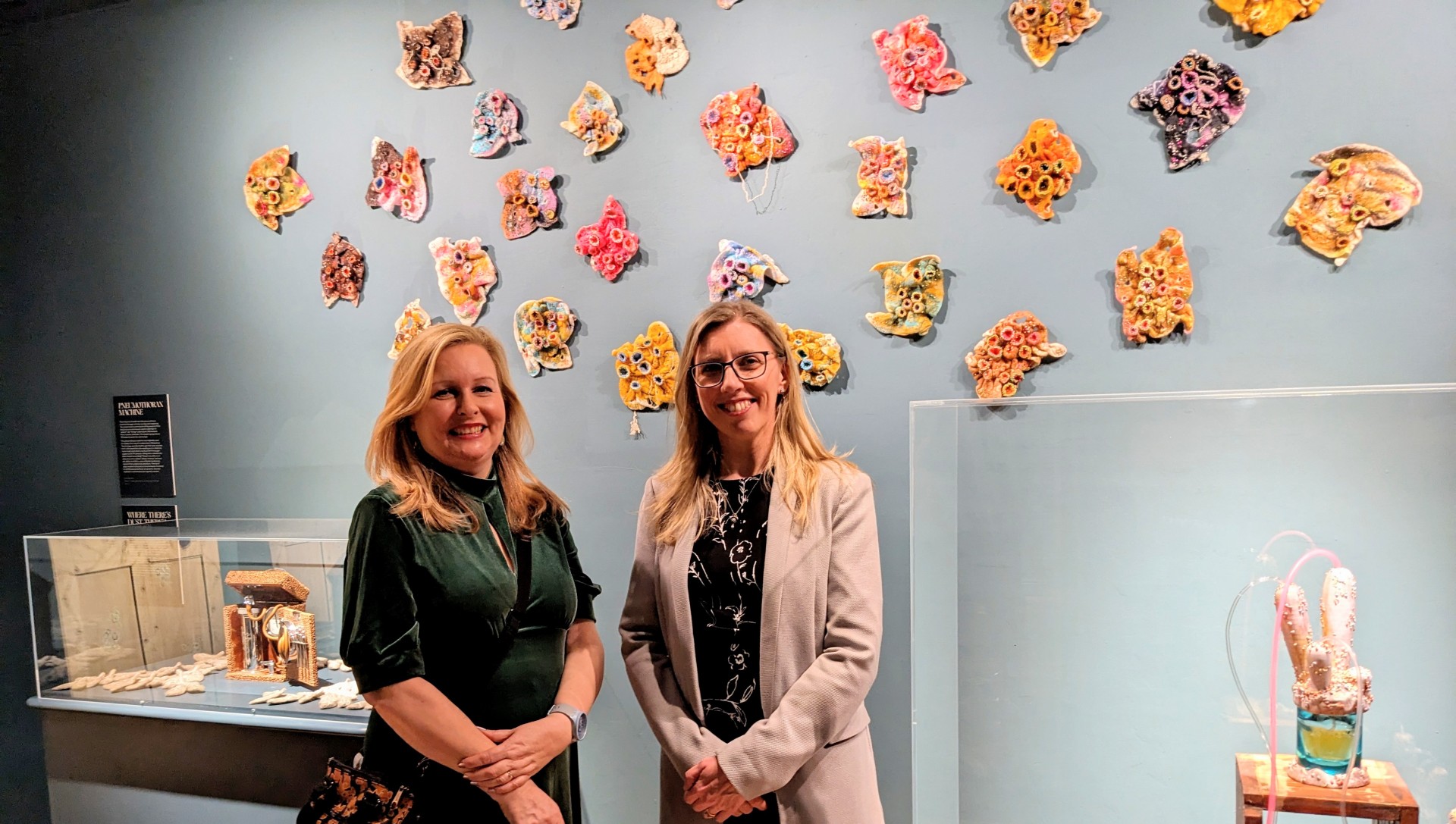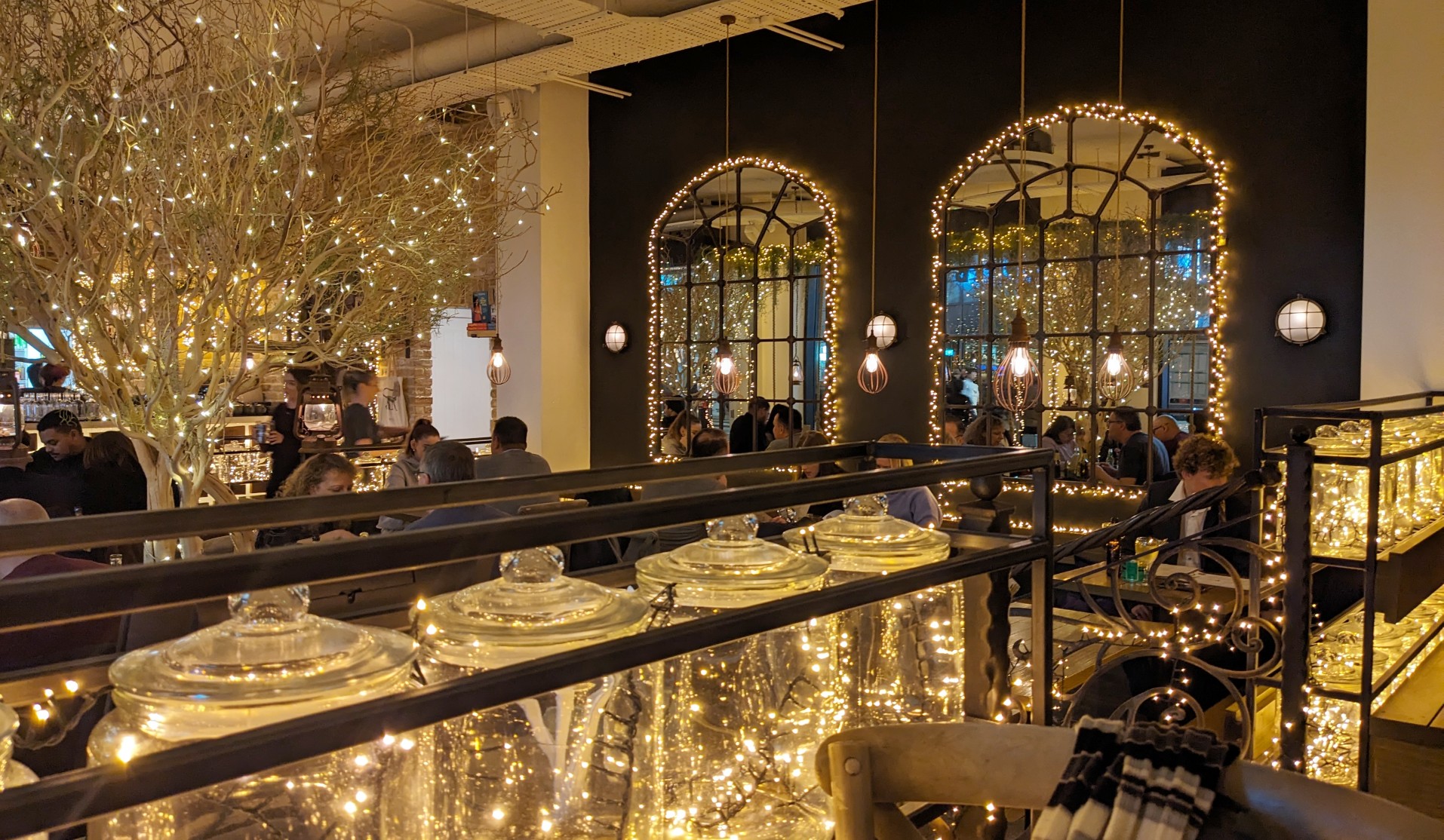The exhibition is open online now, with the physical gallery set to open from 21 May.
As lockdown begins to ease, the Tetley’s new exhibition From This World, to That Which Is to Come seems ideal in terms of construction and content. The Tetley has transformed the exhibition, by artist Mel Brimfield, into something that will engage both online and in person. The 3D exhibition allows visitors to wander around the rooms, corridor and central space of the Tetley, stopping to zoom into the detail of a visual artwork or to listen to a sound or video production.
This is a rich opportunity, but I hope that virtual visitors will become real visitors when the gallery reopens its doors on 21 May. The online experience is truly engaging, but the detail of the centrepiece, Stand, 2020 (feature photograph) and the interactive nature of the sound installations can only be fully appreciated in person.
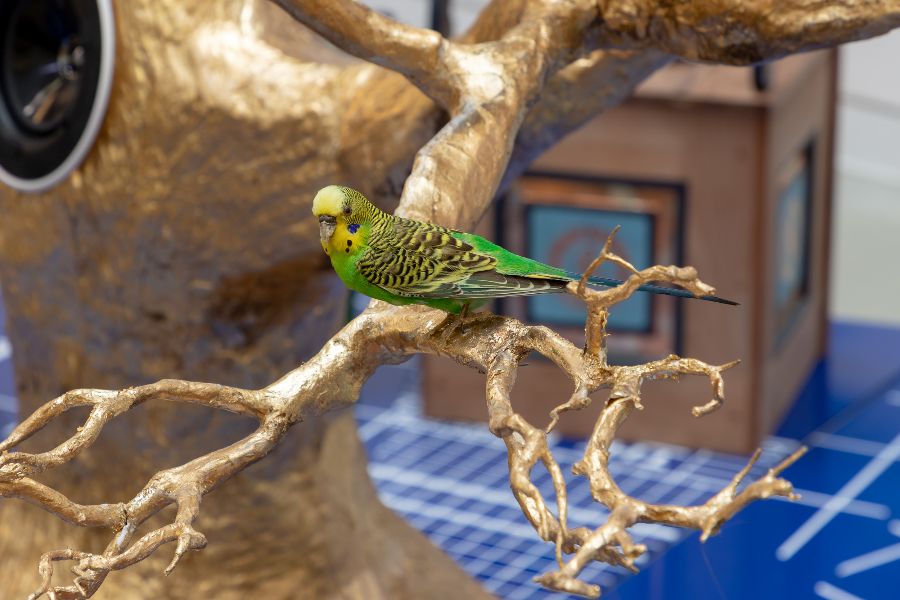
From This World, to That Which Is to Come takes its title from John Bunyan’s 1678 parable The Pilgrim’s Progress, which describes a fictional pilgrimage from The City of Destruction to The Celestial City. The journey imagined here is that of recovery following mental illness. Mel spent two years researching and developing the work during a residency at Bethlem Royal Hospital’s National Psychosis Unit and Kings College Institute of Psychiatry, Psychology and Neuroscience.
Although constructed around the experiences of her own family, patients and medical staff, the allegory perhaps now extends beyond the experience of individuals to the recovery of society; the isolation and mental stress of a pandemic requiring a period of recovery and unity.
Stand, 2020 is a sixteen speaker sculptural audio installation in The Tetley’s Atrium. Although much of the exhibition is very personal, drawing heavily from Mel’s family experiences, this artwork is truly collaborative. Over 100 people contributed to the construction and it was co-produced with composer Gwyneth Herbert.
Sound emanates from a central golden tree and a series of chairs surrounding it. The chairs have been largely produced by the Men’s Sheds movement. These organisations bring together men to share practical activities and in the process build relationships and good mental health. Incredibly, the only stipulation that was given was the height of the chair and the need for an inset speaker in the seat. The creativity and craftsmanship that has been produced is impressive. Artisan skills involving wood, metal, ceramics, glass, wicker and textiles have been utilised and the resulting chairs are artworks in their own right.
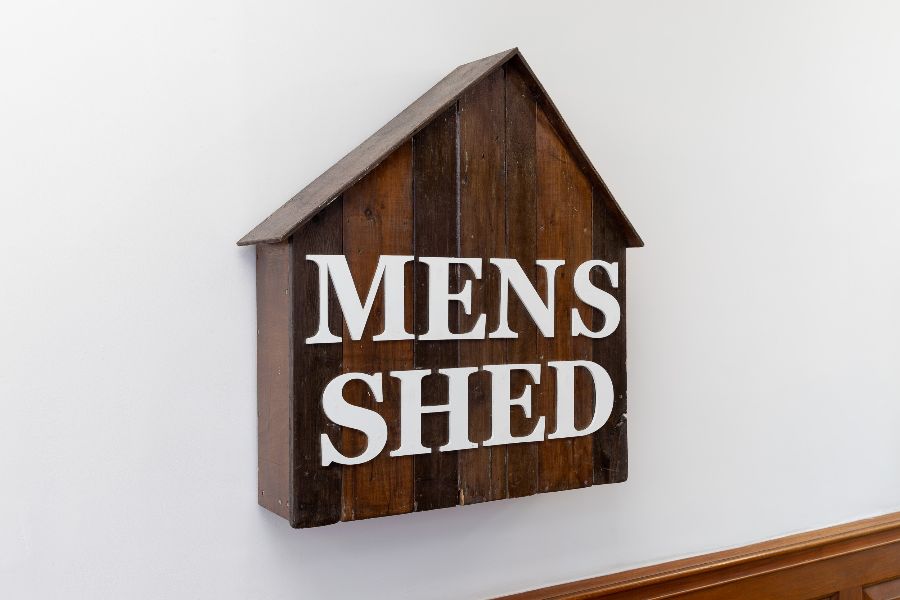
In Stand, 2020, Brimfield celebrates community groups and networks that offer support. She celebrates the small ways people can come together and bolster each other without underestimating the challenges faced by individuals. The central voice in the audio presentation is that of an inpatient from Bethlem with a supporting chorus from mental health orientated More Than Just a Choir. In the tree sits a budgie, a small poignant memorial of the patient’s relationship with his mother.
Many of the exhibits relate to Brimfield’s father (and his mental illness) who is represented in various works as a looming purple presence. The vibrancy of the colour represents energy whilst the depth relates to despair, a word that features frequently in the exhibition. The high and lows are particularly present in The Giant Despair I where a monologue, delivered through a telephone in a semi-enclosed booth, is accompanied by an external musical score. The interplay of music and words heightens emotion and the booth staging adds to the personal experience.
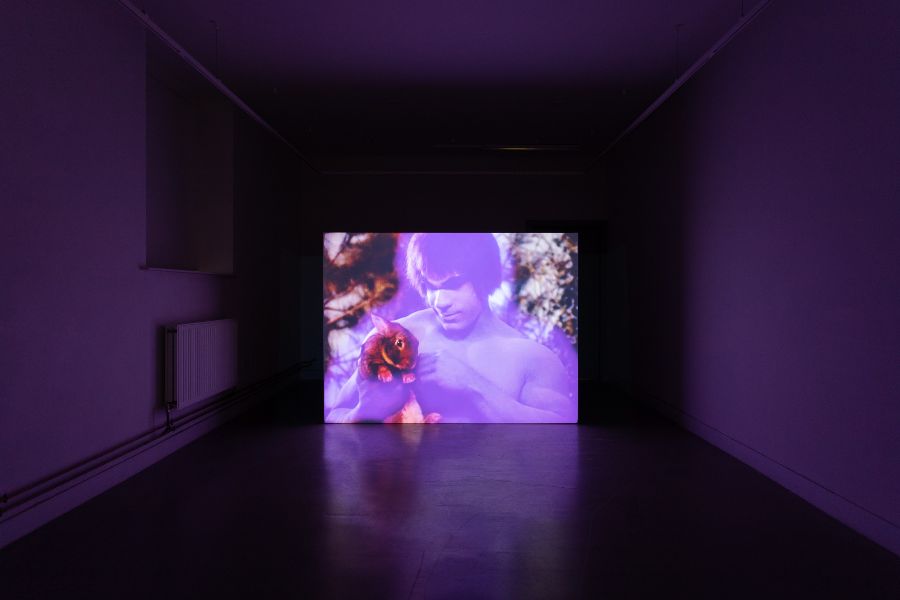
The Giant Despair III on the other hand worked better online for me. With its references to a 1970s TV series it seemed appropriate to watch it on a small screen. Xenobath 1 and Xenobath 11 are also audio / video presentations and are accessible online or in person.
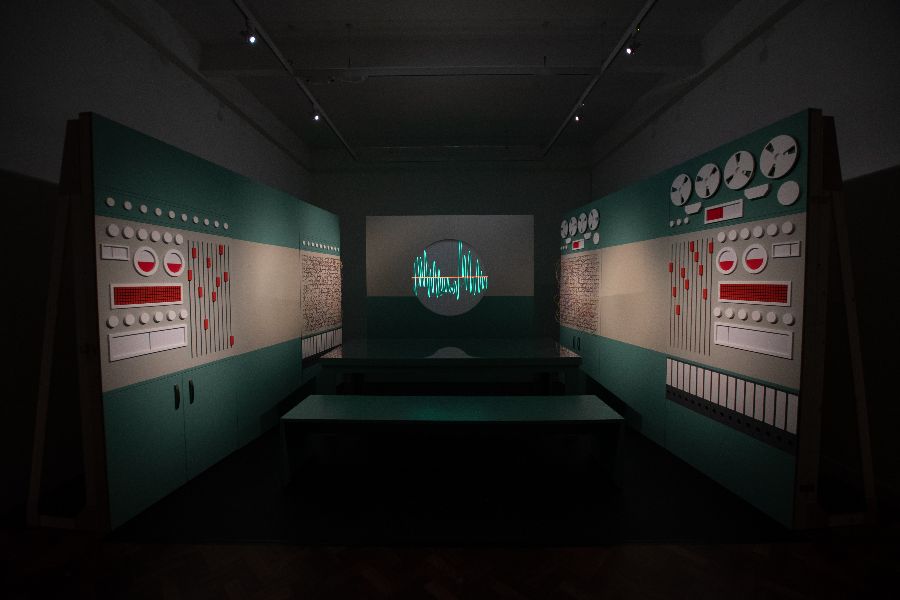
If you can, take the opportunity to experience Ungeziefer in person. Much of Brimfield’s work explores the interface between theatre, performance and art with the audience becoming part of the artwork. Here the visitor is cast as audience and performer. Perching on a high stool, poised over a script, facing a microphone you don headphones and become engrossed in a personal retelling of Kafka’s ‘Metamorphosis’.
A variety of large visual images make reference to comic book culture. Tintin is used to explore paranoia, Brimfield uses Lucy’s psychiatrist’s booth from Peanuts to explore her own mental health and her father’s life journey is presented in comic story format. Look and Learn magazines feature and provide the design format for These Foolish Things, an exploration of remembered items from her mother’s house, familiar to anyone of a similar generation.
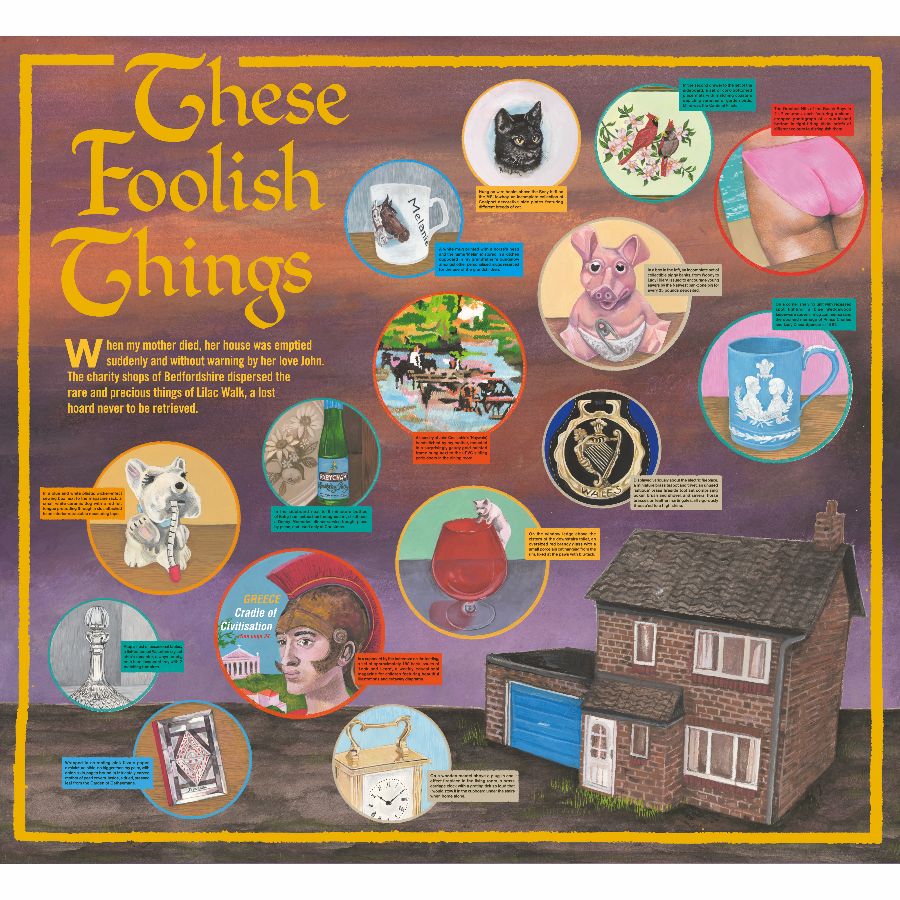
This exhibition deals with difficult subjects and can be emotionally affecting. It was good to hear that The Tetley were working with local mental health organisations to explore the impact of the work. Staff have had mental health training and curator Mel Burntown told me that she and other staff are currently training to become mental health first aiders.
Despite the difficult subject matter, this an exhibition that leaves you with a sense of hope. You are drawn back along the corridor, lined with jubilant signs from Men’s Sheds groups, to the central atrium. Behind the tree and chair tableau hangs a full wall banner announcing the exhibition title From This World, to That Which Is to Come. Below the banner are images of the people Mel Brimfield encountered on her journey to produce this exhibition.
At the bottom is the final message: Unity is Power.
The Tetley www.thetetley.org


